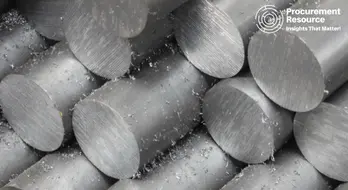Anticipated Recovery in Chinese Demand will Support Aluminum Prices in the Near Term

In the first half of 2022, aluminium prices in the major markets reached new all-time highs, but they drastically declined by the second half. The second-most used industrial metal in the world experienced a topsy-turvy time due to fears about China’s demand, the Russia-Ukraine war, and a strong US currency.
Over the past few years, the metal has shown unprecedented volatility. After Russia invaded Ukraine in March 2022, the price of the metal on the London Metal Exchange quickly soared to an all-time high of USD 4073 from a five-year low of USD 1450 per tonne.
Request Access For Regular Price Update of Aluminum
Later, prices experienced a significant drop as the demand outlook for silvery-white metal was negatively impacted by the energy crisis in Europe and the slowing global economy. The domestic MCX NSE -2.60% and China's Shanghai futures exchange both displayed a similar trend.
Despite potential US administration restrictions on Russian aluminium, the metal is still at risk. There are rumours that the US government is getting ready to impose a 200 percent tax as soon as possible on aluminium produced in Russia.
The action, which has been debated for months, aims to increase pressure on Russia about its involvement in the conflict in Ukraine while also bolstering domestic businesses. The second-largest producer of aluminium in the world, Russia, has been undercutting prices on the US market, hurting American businesses.
Russia's influence as a major producer of commodities on the world stage has been continuously weakened by the US and its western allies.
The second-largest producer of aluminium, and an important supplier of raw materials to US markets, is Russia. The US imports from Russia should stop as a result of the high tax. In the case of a tariff increase, the US government should look into potential alternate supplies because the metal is used to create everything from beer cans to aeroplane parts.
The commodity is receiving some support from China's production and consumption statistics at the same time. More than half of all aluminium used worldwide comes from China, which is both the greatest consumer and producer of metal.
China's manufacturing and construction industries are still active despite the harm done by the shutdown and a decline in export. Since last year, the Chinese economy has also accelerated, followed by the easing of COVID-related regulations. This would increase demand for the metal, which is mostly utilised for automotive, packaging, engineering, and construction projects.
As smelters ramp up production when the power situation eased, China's aluminium production last year increased to a new record high. Since the previous quarter, imports have also increased, mainly from Russia.
High energy use and carbon emissions are produced throughout the aluminium production process. As a result, the Chinese government has implemented strict environmental regulations that guarantee an output cap on major smelting firms.
Inventory levels around the world indicate a coming supply crunch. The amount of aluminium stored is at its lowest point since 2002 and is far lower than it was last year. A large shortfall would raise concerns about shortages and possibly boost prices.
The demand for industrial metals like aluminium will rise in the future if China's growth trajectory keeps up. A further boost for the metal could come from a worldwide economic rebound. On a long-term basis, the price is likely to be affected by the new demand sectors like the electric vehicle and renewable energy industries.
In any case, traders are probably being cautious when placing large bets due to concerns about a potential global recession and the aggressive monetary policy actions conducted by central banks.
Read More About Aluminum Production Cost Reports - REQUEST FREE SAMPLE COPY IN PDF
As per Procurement Resource, prices for aluminium in the major markets rose to new all-time highs in the first half of 2022, but by the second half, they had significantly fallen. Fears over China's demand, the Russia-Ukraine conflict, and a high US dollar caused the second-most used industrial metal in the world to endure a topsy-turvy period
Metal has demonstrated unprecedented volatility over the last few years. Russia's invasion of Ukraine in March 2022 caused the price of the metal to surge to an all-time high of USD 4073 on the London Metal Exchange from a five-year low of USD 1450 a tonne.




.webp)